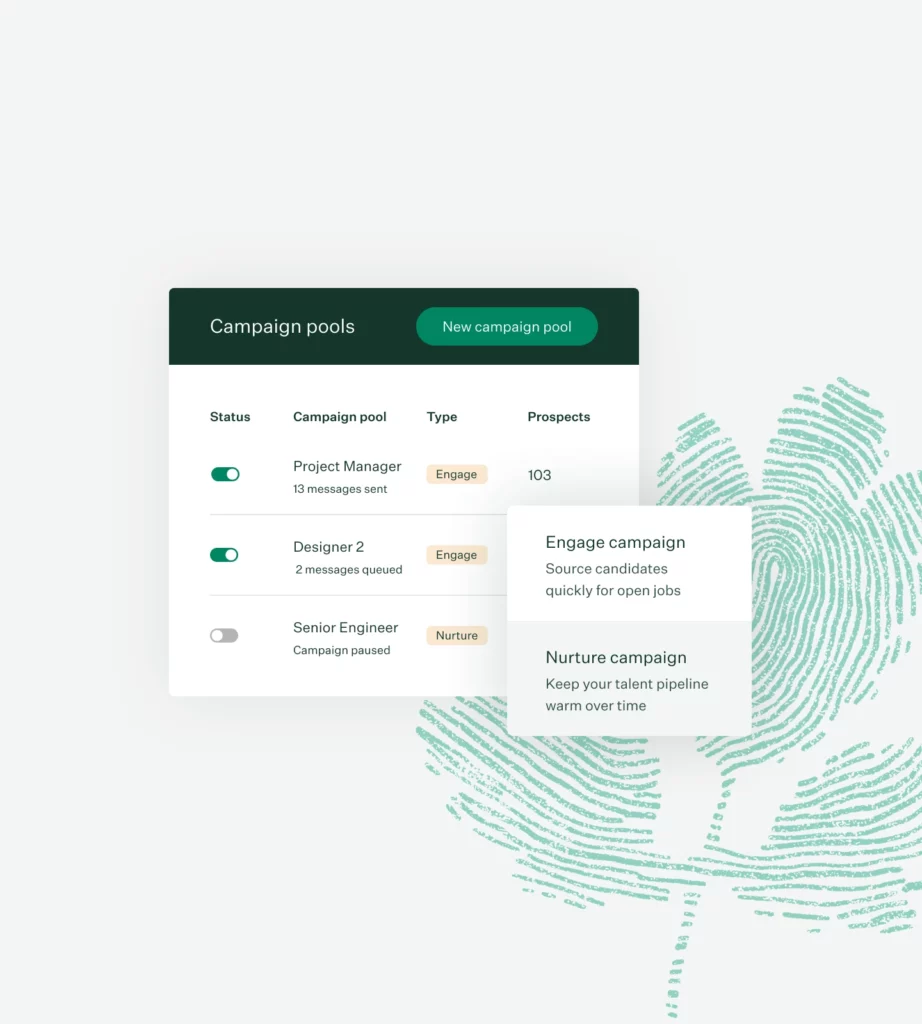Table of Contents
ToggleThe recruitment landscape is transforming rapidly. Traditional hiring methods, posting a job ad, reviewing resumes, and conducting interviews, are no longer enough to attract or retain top talent. The modern workforce demands efficiency, personalization, and technological innovation. Companies that don’t adapt risk losing exceptional candidates to more agile competitors.
A streamlined, data-driven, and technology-enabled recruitment strategy is now essential for identifying, evaluating, and onboarding the right people quickly and effectively.
This guide explores the key phases of a modern hiring process, how technology like AI and automation can improve outcomes, and the best tools available in 2026 to make your recruitment efforts more successful.
The Key Phases of an Effective Hiring Process
To build a high-performing team, organizations need a structured, repeatable, and flexible hiring strategy. The following phases outline how to refine every step of recruitment, from defining roles to onboarding talent.
Define the Role with Precision
The foundation of great hiring starts with clarity. A vague or overly generic job description repels qualified candidates because it fails to communicate expectations, impact, and opportunity.
Instead of listing broad, boilerplate duties, focus on what truly matters:
Define clearly:
Key deliverables: What outcomes will this person be responsible for?
Growth potential: What will success in this role lead to, promotions, leadership paths, or skill development?
Must-have vs. nice-to-have skills: Distinguish between essential requirements and optional preferences to attract a more inclusive range of candidates.
When you clearly define the role, you not only attract better applicants but also reduce turnover, because expectations are aligned from day one.
Diversify Talent Acquisition Channels
In a competitive job market, relying solely on job boards like LinkedIn or Indeed limits your reach. The best hiring teams use a multi-channel recruitment strategy that taps into both active and passive candidates.
Diversification strategies include:
Hosting virtual job fairs or webinars to connect with qualified professionals.
Partnering with universities and training programs to attract emerging talent.
Using niche platforms for specialized industries (e.g., GitHub for developers, Behance for designers).
Leveraging social media to showcase your company culture and engage potential applicants.
By expanding your sourcing efforts, you increase visibility, attract a more diverse talent pool, and build stronger employer branding over time.
Implement AI-Driven Resume Screening
Recruiters can spend up to 40% of their time manually reviewing resumes, time that could be better spent engaging with top candidates.
AI-powered applicant tracking systems (ATS) and recruitment CRMs like ATZ CRM have revolutionized this stage. They use intelligent algorithms to automatically identify high-potential applicants based on experience, skills, and cultural fit.
Benefits of AI screening include:
Speed: Instantly filter thousands of applications.
Accuracy: Prioritize candidates who closely match job criteria.
Reduced bias: Automated screening focuses on skills and data, not subjective impressions.
Consistency: Every applicant is evaluated by the same standards.
Automation doesn’t replace human judgment, it amplifies it. Recruiters can focus on strategy, interviews, and candidate relationships rather than repetitive admin tasks.
Reinvent the Interview Process
The interview is where hiring decisions are made, but traditional formats often fail to reveal a candidate’s true potential. Modern interviews are structured, inclusive, and multifaceted.
A modern interview process might include:
Practical job simulations: Assess how candidates handle real-world challenges.
Panel interviews: Gain insights from multiple perspectives, reducing bias.
Video interviews: Offer flexibility for remote applicants.
Personality and skills assessments: Evaluate soft skills like communication, teamwork, and adaptability.
Structured interviews yield more consistent results and reduce the influence of unconscious bias, improving diversity and quality of hire.
Go Beyond Basic Reference Checks
Reference checks should be more than verifying employment dates. Done right, they can reveal how a candidate actually performs, collaborates, and grows in a team.
Smart reference checks include questions like:
“How did this person handle pressure or challenges?”
“What’s one area you’d recommend they continue to develop?”
“Would you hire this person again?”
Gathering qualitative feedback helps validate your hiring decision and provides insights that guide onboarding and development.
Deliver an Exceptional Job Offer Experience
Top candidates are often evaluating multiple offers at once. The offer stage is where you win or lose their commitment.
To make your offer stand out:
Personalize it: Highlight the elements that matter most, flexibility, professional development, or leadership opportunities.
Be transparent: Clearly outline compensation, benefits, and expectations.
Follow up quickly: Speed is critical. A delayed offer can lead to lost talent.
An offer should reflect your company culture, professional, respectful, and enthusiastic. It’s your final chance to leave a strong impression.
Design an Engaging Onboarding Program
A strong onboarding process bridges the gap between hiring and retention. The first 90 days determine whether new hires feel welcomed, supported, and aligned with company goals.
A great onboarding program includes:
Interactive training: Hands-on sessions that help employees understand their role.
Cultural integration: Meet-and-greets, mentorship programs, and team-building activities.
Clear milestones: Defined success metrics for the first 30, 60, and 90 days.
A thoughtful onboarding process not only accelerates productivity but also increases retention, employees who experience structured onboarding are 58% more likely to stay with a company long-term.
Optimizing Recruitment for Long-Term Success
Recruitment doesn’t end with hiring. The best companies continuously refine their strategies using data, technology, and feedback.
Focus on Long-Term Potential Over Immediate Skills
Hiring for current needs alone can lead to short-term solutions. The best hires are adaptable and growth-oriented.
Look for:
Learning agility: Candidates who seek challenges and embrace change.
Problem-solving ability: How they approach unfamiliar situations.
Cultural alignment: Shared values and team compatibility.
Long-term thinkers evolve with your organization, becoming invaluable assets over time.
Create Job Listings That Inspire, Not Just Inform
Your job description is your first impression. A standard list of duties won’t attract motivated professionals.
Craft compelling job postings by:
Describing the impact of the role, how it contributes to company goals.
Highlighting growth opportunities and training support.
Showcasing your company’s mission, values, and culture.
Storytelling can transform a job posting into an invitation to join a purpose-driven team.
Build a Talent Community for Future Hiring
Reactive hiring (recruiting only when a role opens) slows down growth. Instead, proactive companies maintain a talent pipeline, a network of potential candidates ready for future opportunities.
You can do this by:
Staying in touch with past applicants who were a good fit.
Encouraging employee referrals.
Hosting networking events or webinars.
Using CRM tools like ATZ CRM to nurture long-term candidate relationships.
A warm pipeline drastically reduces time-to-hire and ensures quality candidates are always within reach.
Prioritize Candidate Experience
Every interaction during the hiring process shapes your employer brand. Candidates who feel ignored or disrespected may share negative experiences publicly.
To create a positive candidate experience:
Communicate clearly and consistently about timelines.
Provide feedback to all applicants.
Ensure interviews are organized, friendly, and respectful.
A strong candidate experience leads to higher offer acceptance rates and stronger reputation within your industry.
Assess Team Compatibility, Not Just Individual Talent
An outstanding individual may still fail if they can’t integrate with your team’s culture or communication style.
To assess team fit:
Use behavioral interviews to gauge collaboration styles.
Include potential teammates in later interview rounds.
Evaluate emotional intelligence and adaptability.
Hiring for team synergy ensures smoother collaboration and higher productivity.
Use Data-Driven Insights for Better Hiring Decisions
Modern recruitment thrives on analytics. Tracking metrics helps identify bottlenecks and improve efficiency.
Key recruitment KPIs to monitor:
Time-to-fill: How long it takes to hire from job posting to offer acceptance.
Source effectiveness: Which channels yield the best candidates.
Quality of hire: How well new hires perform after onboarding.
Cost-per-hire: The total cost associated with filling a position.
Analyzing this data helps HR leaders make informed, measurable improvements to hiring strategies.
Implement AI and Automation for Scalable Hiring
Technology is the cornerstone of modern recruitment. AI-powered tools like ATZ CRM and advanced ATS systems can streamline every aspect of the hiring process, from sourcing to onboarding.
How AI transforms recruitment:
Matches candidates to roles faster using predictive algorithms.
Automates communication and interview scheduling.
Provides analytics for smarter decision-making.
Enhances candidate engagement through chatbots and automation.
By embracing automation, companies can scale their recruitment efforts without compromising quality.
Top Recruitment Tools Like ATZ CRM to Streamline Hiring
ATZ CRM – AI-Powered Recruitment & Client Management

ATZ CRM is a powerful, AI-driven recruitment and client management platform built for agencies and HR teams that want to accelerate hiring efficiency while improving candidate and client relationships.
Key Features:
AI-Driven Resume Screening: Automatically parses resumes, identifies best-fit candidates, and matches them to open roles.
Custom Workflows: Build tailored hiring pipelines to fit specific roles or departments.
Comprehensive Analytics: Track candidate progress, hiring success rates, and time-to-fill metrics.
Seamless Integrations: Connect with 6,000+ apps via Zapier for automation.
GPT Integration: Generate job descriptions, candidate outreach messages, and interview summaries in seconds.
Why It Stands Out:
ATZ CRM combines intelligent automation with user-friendly design, making it perfect for both small agencies and large enterprise HR departments.
Greenhouse – Data-Driven ATS for Structured Hiring

Best For: Organizations looking to improve hiring structure, reduce bias, and enhance diversity.
Key Features:
AI-powered resume filtering.
Automated interview scheduling.
Built-in diversity and inclusion tools.
Powerful analytics dashboards for performance tracking.
Greenhouse helps companies standardize their hiring process, ensuring every candidate is evaluated fairly and consistently.
Lever – ATS + CRM Hybrid for Relationship-Based Hiring

Best For: Businesses that focus on nurturing long-term relationships with candidates.
Key Features:
Combines ATS functionality with CRM tools for talent nurturing.
Tracks candidate interactions and engagement history.
Enables multi-channel job posting and automated follow-up.
Customizable reporting for data-driven insights.
Lever helps companies move beyond transactional hiring toward relationship-driven recruitment.
Frequently Asked Questions (FAQ)
What are the biggest challenges in modern recruitment?
The main challenges include talent shortages, competition for skilled candidates, long hiring processes, and maintaining diversity while minimizing bias. Technology like AI and automation can alleviate many of these issues by improving speed and accuracy.
How can AI improve the hiring process?
AI reduces administrative tasks, speeds up resume screening, and provides insights into candidate fit. It ensures that recruiters spend more time engaging with top talent rather than managing repetitive work.
Why is candidate experience so important?
A positive candidate experience enhances your employer brand, increases offer acceptance rates, and encourages referrals. Negative experiences can harm reputation and discourage future applicants.
How can companies reduce hiring bias?
Using structured interviews, blind resume screening, and AI-driven tools helps focus evaluations on skills and performance rather than demographics or personal characteristics.
What recruitment metrics should HR teams track?
The most important metrics include time-to-fill, cost-per-hire, source effectiveness, candidate satisfaction, and retention rate. Monitoring these KPIs helps improve overall recruitment ROI.
How do tools like ATZ CRM help recruitment agencies?
ATZ CRM automates repetitive tasks such as resume screening, interview scheduling, and pipeline management. It also offers data analytics, AI-powered candidate matching, and integration with thousands of business applications for smoother operations.
What is the role of onboarding in the hiring process?
Onboarding bridges the gap between recruitment and retention. A strong onboarding program helps new employees integrate faster, boosts engagement, and significantly reduces turnover in the first year.
Conclusion: Build a Winning Recruitment Strategy
Recruitment today isn’t just about filling roles, it’s about creating meaningful, data-driven connections with people who will drive your company’s success.
By defining roles precisely, diversifying sourcing channels, using AI-driven tools like ATZ CRM, and focusing on the candidate experience, organizations can significantly reduce time-to-hire while improving quality-of-hire.
The future of recruitment belongs to companies that combine technology with human insight, leveraging automation to save time and human empathy to build lasting relationships.
Adopt these modern strategies, and you’ll not only attract the best talent, you’ll keep them, empower them, and grow together for the long term.
